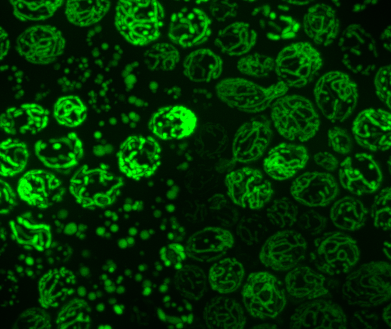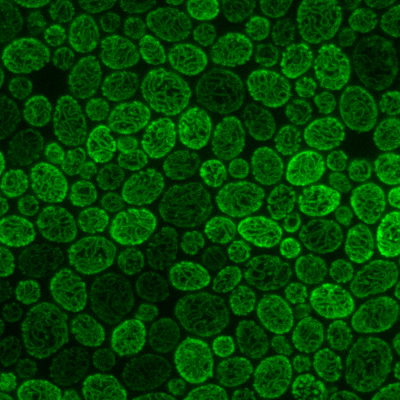Attention science: I proudly present our work on bet-hedging in yeast metabolism, performed in the labs of @EvolvingMurray and @fleshball with @QuinceyJustman. We found a bizarre and fascinating example of non-genetic variation in yeast metabolic activity.
https://www.biorxiv.org/content/10.1101/2020.04.08.032904v1">https://www.biorxiv.org/content/1...
https://www.biorxiv.org/content/10.1101/2020.04.08.032904v1">https://www.biorxiv.org/content/1...
Yeast prefer to produce their ATP from glucose, and they prefer to do it by fermentation. When they must respire, it takes them hours to make the transition, which we can detect by an increase in mitochondrial volume. (Cells need mitochondria for respiration.)
We found that if we force an isogenic population of yeast to respire without prior predictive cues, some cells intrinsically possess the ability to make the metabolic switch, and others do not. The difference in how their mitochondrial networks respond is… striking. (Here/below)
We find that yeast populations are bimodal even before their environment changes: one class of cells is maximizing its current growth rate, while the other is growing more slowly in exchange for resistance to environmental instability. So yeast hedge their metabolic bets!
This has been the product of an incredible number of years in graduate school and the unrelenting mentorship of @fleshball and @evolvingmurray. I hope that it’s of interest to someone! https://twitter.com/biorxivpreprint/status/1248170751817060353?s=20">https://twitter.com/biorxivpr...

 Read on Twitter
Read on Twitter

![[Graphical abstract: Cats are normally rod-shaped but may condense into spheres when not feeding. So do some yeast organelles. We use this to detect two coexisting metabolic states that protect a yeast population against environmental instability.] [Graphical abstract: Cats are normally rod-shaped but may condense into spheres when not feeding. So do some yeast organelles. We use this to detect two coexisting metabolic states that protect a yeast population against environmental instability.]](https://pbs.twimg.com/media/EVL3lT7WoAANQMu.jpg)


